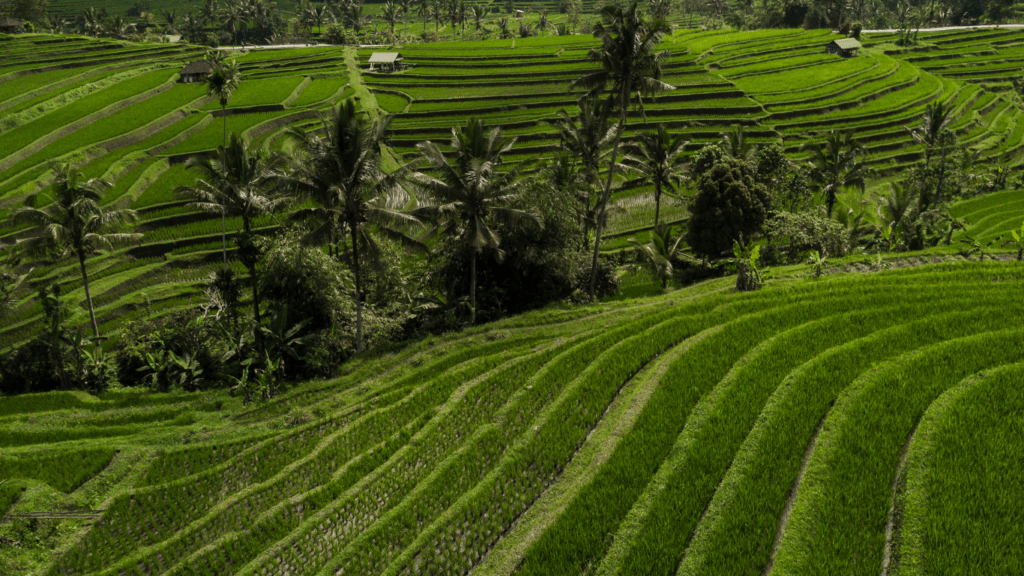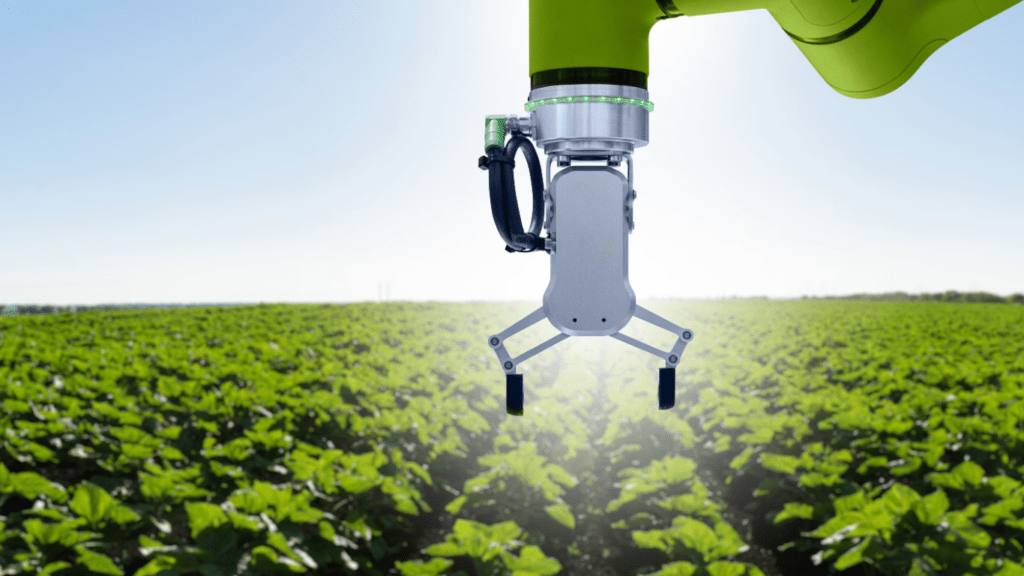Overview of Sustainable Farming Practices
Sustainable farming practices focus on long-term health for ecosystems, farmers, and consumers. Farmers aim to balance economic viability with environmental stewardship.
Crop Rotation
Crop rotation enhances soil health and reduces disease. Farmers, for example, alternate legumes with grains to maintain soil nutrients and break pest cycles.
Organic Farming
Organic farming avoids synthetic chemicals and GMOs. Instead, farmers use compost, manure, and organic pest controls. This method promotes biodiversity and can improve soil structure.
Agroforestry
Agroforestry integrates trees and shrubs into crops and livestock systems. Trees, for instance, provide shade and shelter, improve water retention, and increase biodiversity.
Integrated Pest Management (IPM)
IPM combines biological, physical, and chemical tools. Farmers employ beneficial insects, crop barriers, and targeted pesticides to reduce crop damage while minimizing environmental impact.
Conservation Tillage
Conservation tillage reduces soil disturbance. Farmers, for example, leave crop residues on fields to protect soil from erosion and enhance organic matter.
Water Management
Efficient water management includes drip irrigation and rainwater harvesting. Farmers use these techniques to conserve water resources, improve crop yields, and reduce runoff.
Cover Cropping
Cover cropping involves planting non-cash crops during off-seasons. Farmers use these to prevent erosion, improve soil health, and suppress weeds.
Strategic application of these practices drives sustainability across the agricultural sector. Sustainable farming maintains productivity while conserving resources, aligning with global demands for eco-friendly food production.
Market Dynamics Influenced by Sustainable Farming
Sustainable farming practices drive significant shifts in agricultural market dynamics. These methods affect trends, increase demand for eco-friendly products, and shape consumer preferences.
Emerging Trends
Sustainable farming practices contribute to several emerging trends in agriculture. Adoption of clean energy and renewable resources grows as farmers seek to reduce their carbon footprints.
Use of precision agriculture and advanced technologies like drones and sensors increases, optimizing resource use and monitoring crop health. There’s also a rise in organic and regenerative farming, promoting soil health and biodiversity. These trends redefine market dynamics, fostering innovation and efficiency in farming operations.
Consumer Preferences
Consumer preferences shift markedly towards sustainable products. Shoppers now prioritize food items labeled as organic, non-GMO, and locally sourced, showing increased willingness to pay premium prices.
Transparency in food production processes and ethical sourcing gain importance. This consumer behavior influences agricultural supply chains, compelling producers to adopt sustainable practices to meet market demands.
Retailers and food brands respond by highlighting eco-friendly products, driving broader adoption of sustainability in the market.
Case Studies of Successful Implementation
Sustainable farming practices have not only proven effective in theory but also in practice, as evidenced by numerous successful case studies. Let’s explore a few notable examples in organic farming, regenerative agriculture, and agroforestry.
Organic Farming
One remarkable case of organic farming success is Eden Farms in California. Established in 2001, Eden Farms transitioned from conventional to organic farming.
They implemented crop rotation and natural pest control methods to maintain soil health and reduce chemical use. The farm reported a 20% increase in yield within three years, alongside a 15% reduction in water usage.
Eden Farms attracted a growing base of health-conscious consumers, boosting their profitability and market presence. Due to these practices, Eden Farms emerged as a leading supplier of organic produce in the region.
Regenerative Agriculture
Gabe Brown’s farm in North Dakota offers an insightful example of regenerative agriculture. By applying no-till farming and diversified crop rotations since 1993, Brown transformed degraded soil into a thriving ecosystem. He didn’t rely on synthetic inputs, instead using cover crops and livestock integration to build soil fertility and sequester carbon.
Brown’s farm witnessed a 200% increase in organic matter in the soil over two decades. This not only enhanced productivity but also resilience against extreme weather conditions. Gabe Brown’s regenerative techniques became a model, inspiring similar approaches worldwide.
Agroforestry
The Savannah Institute in Illinois provides an exemplary model for agroforestry. This institute established a network of farms using a mix of trees and crops to enhance biodiversity and soil health.
They planted perennial crops alongside timber species to create a sustainable, multi-output system. One farm reported a 30% increase in biodiversity and a significant reduction in soil erosion within five years of implementation.
Sustainable practices fostered long-term productivity and environmental health. By integrating trees with agriculture, the Savannah Institute demonstrated the economic and ecological benefits, leading to broader adoption within the farming community.
Economic Benefits and Challenges
Sustainable farming practices present both economic advantages and obstacles. Balancing these factors is key to driving market changes.
Cost-Benefit Analysis
Implementing sustainable farming practices involves upfront costs. Farmers invest in organic fertilizers, advanced irrigation systems, and renewable energy sources. However, these initial expenses often result in long-term savings.
For instance, water-efficient techniques and solar power systems reduce utility costs. Studies show that organic farming yields higher price premiums, offsetting the higher input costs. Additionally, sustainable practices enhance soil health, leading to increased productivity over time.
Market Opportunities
- The demand for sustainably-produced goods continues to rise.
- Consumers increasingly prefer products labeled as organic, non-GMO, or eco-friendly, creating lucrative market opportunities.
- Farmers adopting sustainable methods can tap into premium markets and meet certification requirements, gaining a competitive edge.
- Partnerships with local markets, farm-to-table restaurants, and green retailers expand revenue streams.
- By aligning with consumer values, sustainable farming practices establish strong market positioning and drive long-term profitability.
Policy and Regulatory Landscape

Governments worldwide now support sustainable farming through policies and regulations. In the US, the USDA’s National Organic Program (NOP) sets standards for organic farming, ensuring farmers meet specific criteria to gain certification. Examples of these standards include prohibiting synthetic fertilizers and pesticides, promoting animal welfare, and conserving biodiversity.
The EU Common Agricultural Policy (CAP) incentivizes sustainable practices. Farmers adhering to eco-schemes, like organic farming and agroforestry, receive financial support. CAP emphasizes environmental performance, rewarding those reducing carbon emissions and enhancing soil health.
Japan’s Act on Promotion of Organic Agriculture encourages sustainable farming by offering subsidies and technical assistance. Farmers receive support for reducing chemical usage and adopting organic practices. The Act also facilitates the development of markets for organic products.
National policies in countries like Canada and Australia also back sustainable farming. Canada’s Growing Forward framework includes environmental farm plans, while Australia’s National Strategy for Ecologically Sustainable Development integrates farming with environmental preservation. These policies promote practices like:
- water conservation
- soil management
- use of renewable resources
International agreements influence domestic policies. The Paris Agreement, aimed at combating climate change, includes commitments to reduce agricultural emissions. Countries like Brazil and India align their national policies to meet these international targets, encouraging low-emission farming practices.
Policy harmonization remains vital for global consistency. Aligning standards across countries simplifies compliance for international trade. Farmers benefit from clear, unified guidelines, facilitating the export of sustainable products.
Financial incentives and grants play a crucial role. Government programs often provide subsidies for sustainable agriculture projects. Examples include the Conservation Reserve Program (CRP) in the US and the Environmental Stewardship Scheme (ESS) in the UK, offering financial support for practices enhancing ecosystem services and biodiversity.
Regulation also comes with enforcement mechanisms. Regular inspections, certification renewals, and penalties for non-compliance ensure adherence to sustainable standards. For instance, the USDA conducts periodic reviews of certified organic farms to verify ongoing compliance with NOP standards.
Farmers also navigate evolving policies in response to climate change. Governments introduce adaptive measures to support resilience. Examples include drought-resistant crops, water-efficient irrigation techniques, and integrated pest management strategies. These measures aim to sustain productivity under changing climatic conditions.
A dynamic regulatory environment shapes sustainable farming globally, driving market changes. By aligning national efforts with international commitments, offering financial incentives, and enforcing compliance, policies foster a shift towards sustainable agriculture, impacting market dynamics.
Future Outlook for Sustainable Farming
Technological advancements promise significant transformations in sustainable farming. Precision agriculture, using tools like GPS and IoT sensors, enables farmers to optimize resource use, improving efficiency and reducing waste. Drones equipped with multispectral cameras monitor crop health, offering data that drives better decision-making.
Consumer demand strongly influences the future of sustainable farming. More people seek sustainably-sourced products, leading retailers to source primarily from eco-friendly farms. According to a 2020 study by Nielsen, 66% of global consumers are willing to pay more for sustainable goods.
Government policies continue to evolve, favoring sustainable farming practices. Incentives and subsidies promote adoption. The EU’s Green Deal aims to reduce pesticide use by 50% by 2030. In the US, the USDA’s Climate-Smart Agriculture and Forestry initiative invests over $1 billion in programs reducing greenhouse gases.
Educational programs on sustainable farming increase. Universities and extension services offer courses and workshops, equipping the next generation with necessary skills. Institutions like the University of California Agriculture and Natural Resources provide resources for farmers transitioning to sustainable methods.
Biodiversity gains attention as integral to sustainable farming. Practices like intercropping and polyculture enhance ecosystem services, benefiting both crops and surrounding habitats. A 2019 study in the journal Science Advances found that diversifying crops leads to greater resilience against pests and diseases.
Collaborations among stakeholders drive progress. Partnerships between tech companies, agricultural organizations, and governments lead to innovative solutions. For instance, Microsoft’s AI for Earth initiative collaborates with the USDA to develop tools aiding farmers in sustainability.
Overall, the trajectory for sustainable farming hinges on technology integration, consumer behavior, supportive policies, education, biodiversity, and collaborative efforts. These elements collectively shape a resilient, sustainable agricultural future.



